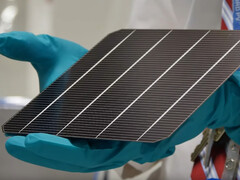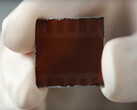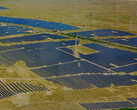Certified by the photovoltaic calibration laboratory of the Fraunhofer Institute, Oxford PV can now boast of being able to produce one of the most efficient PV modules in series with an efficiency of 26.9 percent.
The power yield is achieved by an additional layer of perovskite. The mineral, which only converts a certain part of the light and allows the rest to pass through, can be applied to a silicon solar cell.
Such a tandem cell utilizes the light to a greater extent. In theory, an efficiency of over 40 percent would even be possible. However, the perovskite is only durable if it is provided with a few additional layers. This means that not much of the actual possible efficiency remains.
After all, solar cells with perovskite have already been presented that have achieved an efficiency of almost 20 percent. However, they always had the problem that this value dropped too quickly in too short a time.
But even so, this jump from around 20 to almost 27 percent is enough to increase the electricity yield by around 30 percent with the same surface area. The difference is likely to be even greater if existing modules from older years are replaced by the new tandem models.
The new solar modules are currently being presented at the Intersolar Europe trade fair. With a surface area of 1.6 square meters, they weigh less than 25 kilograms. They are therefore manufactured to the ideal size for typical roof surfaces.
The factory in Brandenburg an der Havel for solar modules has been in existence since 2008, has been owned by Oxford PV since 2016 and repeatedly sets world records in the commercial production of tandem cells. Although 26.9 percent is significantly lower than this, it is certainly enough for large-scale production if the price is right.




















